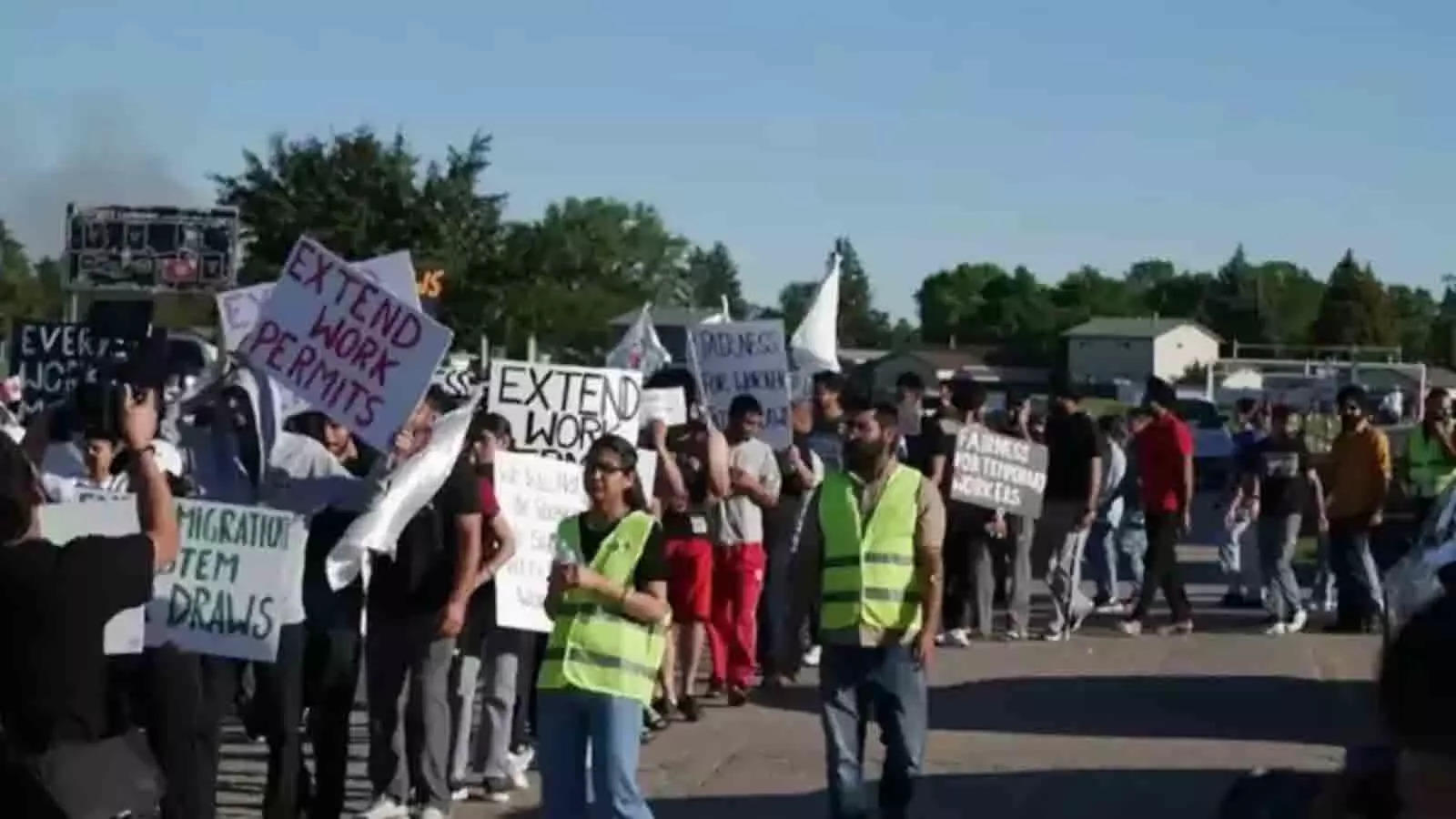Indian students in Canada are increasingly anxious following Prime Minister Justin Trudeau’s recent comments on reducing the number of low-wage, temporary foreign workers in the country. According to Immigration Refugees and Citizenship Canada (IRCC), Indian nationals represent the largest group among international students, holding 37% of the 579,075 study permits issued as of November 2023.This is a significant increase from 2018, when only 107,070 Indian students received permits. Many students had anticipated that their study permits lead to permanent residency (PR) and eventually citizenship. However, recent policy changes have led to uncertainty among them.
UN’s Warning on Temporary Foreign Workers
The United Nations (UN) special rapporteur recently highlighted concerns about Canada’s reliance on temporary foreign workers, labelling it as a potential “breeding ground for contemporary forms of slavery.” This observation underscores the exploitation and underpayment faced by temporary workers, who often occupy low-wage positions in sectors like agriculture, hospitality, and retail. The UN’s warning has intensified the debate around immigration policies and contributed to the growing anxiety among international students.
Trudeau’s Plan for a Policy Shift
Prime Minister Trudeau announced plans to reduce the number of low-wage foreign workers in response to mounting domestic pressure. Trudeau has been quoted by a media house saying, “The country would reduce the number of low-wage, foreign workers so that Canadian businesses invest in their own workers and youth.” The plan to change policy is part of a broader effort to address criticisms about unchecked immigration and to improve job opportunities for Canadian citizens, especially youth. This announcement comes amid a rising unemployment rate for temporary residents. Media reports suggest that it has reached 11%, compared to a 6.2% rate for the overall workforce.
What makes Indian students anxious?
Many Indian students, like their international counterparts, had viewed their study permits as a pathway to PR. Thousands of Indian students, particularly from Punjab, have been enrolling in what are known as “degree mills” to earn diplomas in various trades. These institutions were seen as a pathway to obtaining work permits, which could eventually lead to permanent residency and citizenship in Canada.
Hence, the probable reduction of the number of low-wage temporary workers, as hinted by the PM, is a cause of concern for them. In Prince Edward Island (PEI), the provincial government has cut the number of nominees for PR through the Provincial Nominee Program (PNP) by 25% for 2024, citing strain on healthcare and housing systems. This has exacerbated fears of deportation among immigrants in various sectors.
Looking Ahead
While Trudeau’s government maintains that study permits should not guarantee PR, the policy changes have caused significant distress among international students and temporary foreign workers. These protests not only reflect concerns about their current status but also seek support from the sizable Indian-origin Canadian voter base. As Canada navigates its immigration policy adjustments, the outcome of these protests will be crucial for many Indian students and foreign workers in the country.
UN’s Warning on Temporary Foreign Workers
The United Nations (UN) special rapporteur recently highlighted concerns about Canada’s reliance on temporary foreign workers, labelling it as a potential “breeding ground for contemporary forms of slavery.” This observation underscores the exploitation and underpayment faced by temporary workers, who often occupy low-wage positions in sectors like agriculture, hospitality, and retail. The UN’s warning has intensified the debate around immigration policies and contributed to the growing anxiety among international students.
Trudeau’s Plan for a Policy Shift
Prime Minister Trudeau announced plans to reduce the number of low-wage foreign workers in response to mounting domestic pressure. Trudeau has been quoted by a media house saying, “The country would reduce the number of low-wage, foreign workers so that Canadian businesses invest in their own workers and youth.” The plan to change policy is part of a broader effort to address criticisms about unchecked immigration and to improve job opportunities for Canadian citizens, especially youth. This announcement comes amid a rising unemployment rate for temporary residents. Media reports suggest that it has reached 11%, compared to a 6.2% rate for the overall workforce.
What makes Indian students anxious?
Many Indian students, like their international counterparts, had viewed their study permits as a pathway to PR. Thousands of Indian students, particularly from Punjab, have been enrolling in what are known as “degree mills” to earn diplomas in various trades. These institutions were seen as a pathway to obtaining work permits, which could eventually lead to permanent residency and citizenship in Canada.
Hence, the probable reduction of the number of low-wage temporary workers, as hinted by the PM, is a cause of concern for them. In Prince Edward Island (PEI), the provincial government has cut the number of nominees for PR through the Provincial Nominee Program (PNP) by 25% for 2024, citing strain on healthcare and housing systems. This has exacerbated fears of deportation among immigrants in various sectors.
Looking Ahead
While Trudeau’s government maintains that study permits should not guarantee PR, the policy changes have caused significant distress among international students and temporary foreign workers. These protests not only reflect concerns about their current status but also seek support from the sizable Indian-origin Canadian voter base. As Canada navigates its immigration policy adjustments, the outcome of these protests will be crucial for many Indian students and foreign workers in the country.





